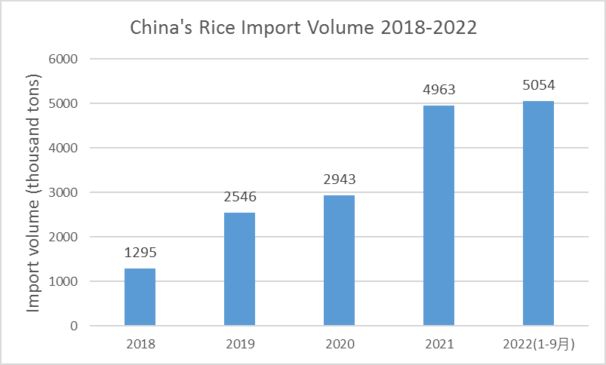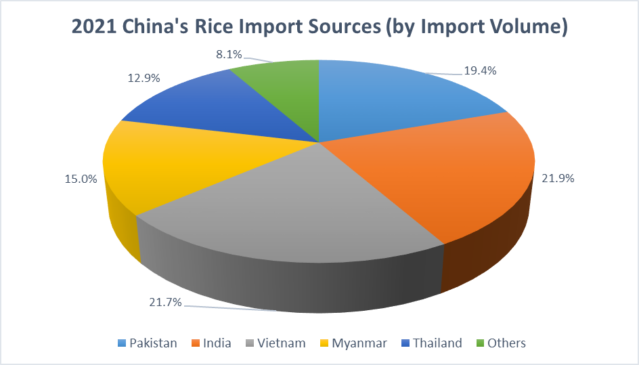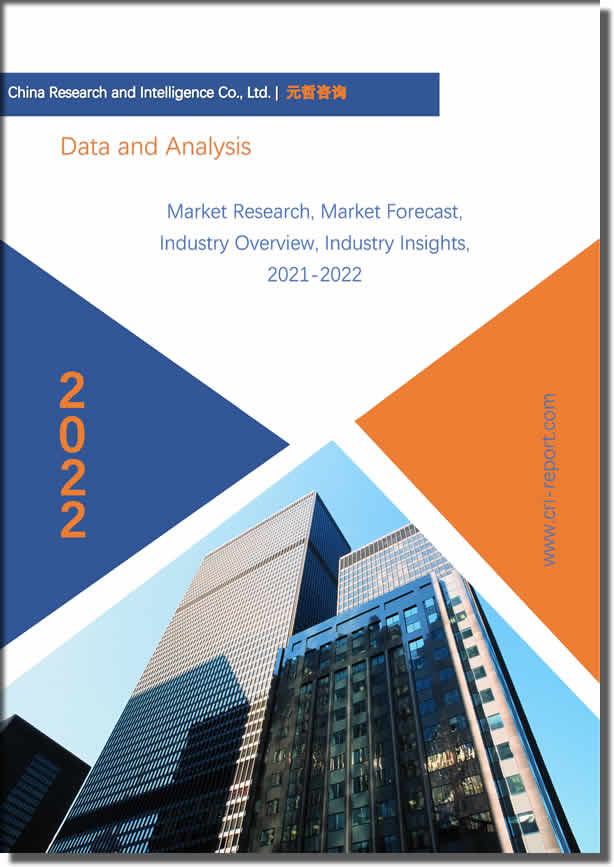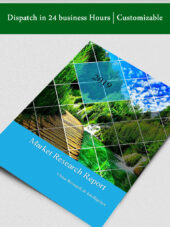Description
China’s Rice Import Overview
With the development of China’s economy and rising living standards, the demand for rice in the Chinese market is on the rise. Due to the limited arable land, there is little room for growth in China’s local rice production, and China needs to import a large amount of rice every year.
In 2021, China’s total rice imports were 4.963 million tons, up 68.7% year-on-year; the import value was US$2.23 billion, up 494.4% year-on-year. In the first three quarters of 2022, China’s total rice imports were 5.054 million tons, already exceeding the previous year’s total imports, up 41.1% year-on-year, and the import value was US$2.11 billion, up 29.3% year-on-year.

In 2021, the top five source countries for China’s rice imports by import volume were India, Vietnam, Pakistan, Myanmar and Thailand. Among them, India ranked first in terms of rice import volume with 1.089 million tons, accounting for 21.9%, and the import value amounted to US$370 million, accounting for 16.6%.
According to CRI’s analysis, the top five source countries for China’s rice imports remained unchanged in the first three quarters of 2022, but rice imports from Pakistan overtook Vietnam to jump to second place. India remains China’s largest source of rice imports, with a volume of 2.042 million tons, up 140.5% year-on-year, accounting for 40.4% of total imports, which amounted to US$730 million, or 34.6%.

In terms of import types, the main types of rice imported by China are long-grain rice concentrate and long-grain rice broken.
In 2021, China imported 2.271 million tons of long-grain rice concentrate and 2.20 million tons of long-grain rice broken, which together accounted for 90.1% of total imports, with import values of US$1.19 billion and US$840 million, respectively, accounting for 91.0% of total imports.
In the first three quarters of 2022, the China imported 2.727 million tons of long-grain rice broken rice and 1.832 million tons of long-grain rice refined rice, with import values of US$990 million and US$910 million, respectively.
CRI expects China’s overall rice imports to continue to rise in the future, and there are still many opportunities in the Chinese market for global rice export trading companies.
Topics covered:
- China’s Rice Import Status and Major Sources in 2018-2022
- What is the Impact of COVID-19 on China’s Rice Import?
- Which Companies are the Major Players in China’s Rice Import Market and What are their Competitive Benchmarks?
- Key Drivers and Market Opportunities in China’s Rice Import
- What are the Key Drivers, Challenges, and Opportunities for China’s Rice Import during 2023-2032?
- What is the Expected Revenue of China’s Rice Import during 2023-2032?
- What are the Strategies Adopted by the Key Players in the Market to Increase Their Market Share in the Industry?
- What are the Competitive Advantages of the Major Players in China’s Rice Import Market?
- Which Segment of China’s Rice Import is Expected to Dominate the Market in 2032?
- What are the Major Adverse Factors Facing China’s Rice Import?




Reviews
There are no reviews yet.